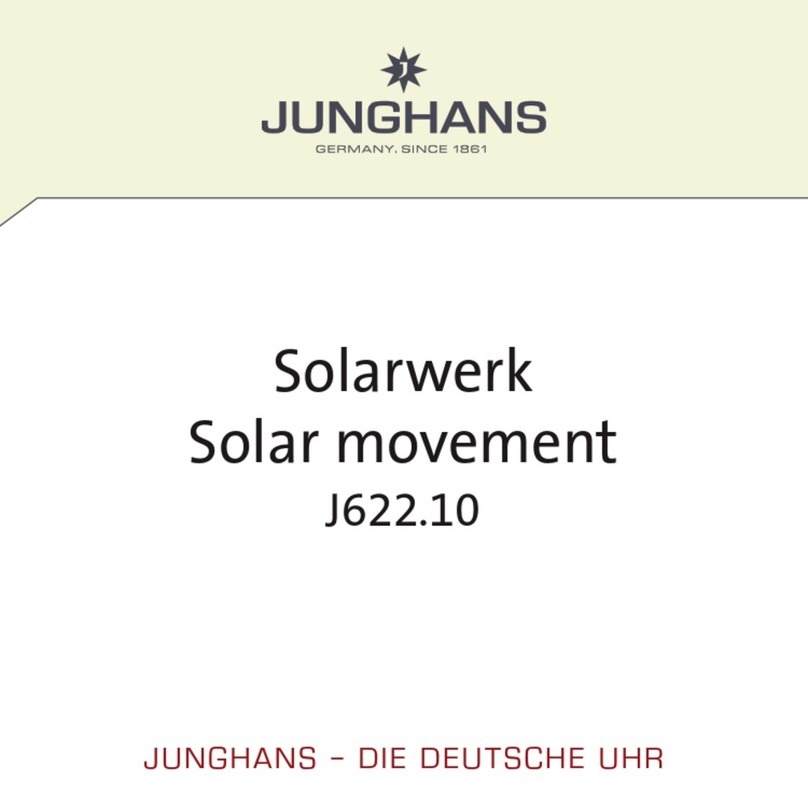
3332
2. Environmentally friendly solar technology
Technology that needs no batteries! Light – no matter whether sun-
light or artificial – penetrates the solar or light-transparent watch face.
This transforms the light into electrical energy, which gets saved in a
long-life power store. The power store serves as the source of electrici-
ty for your multi-frequency radio-controlled solar-powered movement
J615.84.
3. Automatic time synchronisation
The automatic time synchronisation process always takes place at
night based on the local time set on your watch:
EU – DCF 77: at c. 2 a.m. and 3 a.m.
JP – JJY40 and JJY60: c. 2 a.m.
US – WWVB: c. 2 a.m.
At the start of the synchronisation process the LC display automatical-
ly switches off. The second hand begins to move and stops at the 12:00
position. Minute and hour hands remain at the time last displayed. The
display remains switched off for the full duration of the synchronisa-
tion process (max. 9 minutes) or until this is manually aborted.
Automatic time synchronisation can be aborted by pressing any button.
For the USA’s WWVB time signal transmitter the following specific
feature applies:
After a successful transmitter call or restart, your Junghans multi-fre-
quency radio-controlled solar-powered watch always reads in Pacific
Standard Time. Due to the non-uniform changeover from summer to
winter time and the differing time zones in the individual US states,
you are given the opportunity to adjust winter time, summer time
and time zone settings (see 6.2) manually. If, due to where you are,
the time zone or summer / winter time that you have set differs from
PST, it is nevertheless retained during any subsequent transmitter
call or automatic synchronisation.
After automatic time synchronisation has been successfully perfor-
med, you can see which transmitter the signal was picked up from by
pressing button T1. The time signal always changes the date automati-
cally. In leap years the 29th of February gets automatically taken into
account. If none of the attempts at picking up a signal lead to clear syn-
chronisation, the reception indicator gets deactivated (see section 6).
Thanks to the internal time-memory, your watch will continue to run
during any days without time synchronisation with the precision of a
quartz watch. The next successful reception of the time signal leads to
synchronisation and the reception indicator on the LC display becomes
activated.
Recommendation: To ensure the best possible conditions for automa-
tic reception of the time synchronisation signal, the watch should not
be worn and, if possible, not left near to any electrical appliances, mobi-
le or cordless phones.
All manuals and user guides at all-guides.com





























